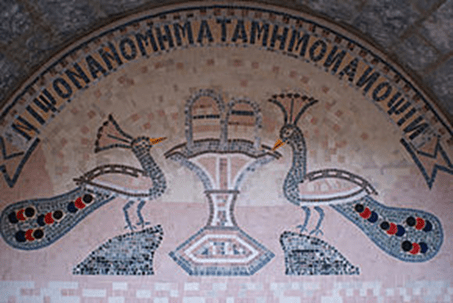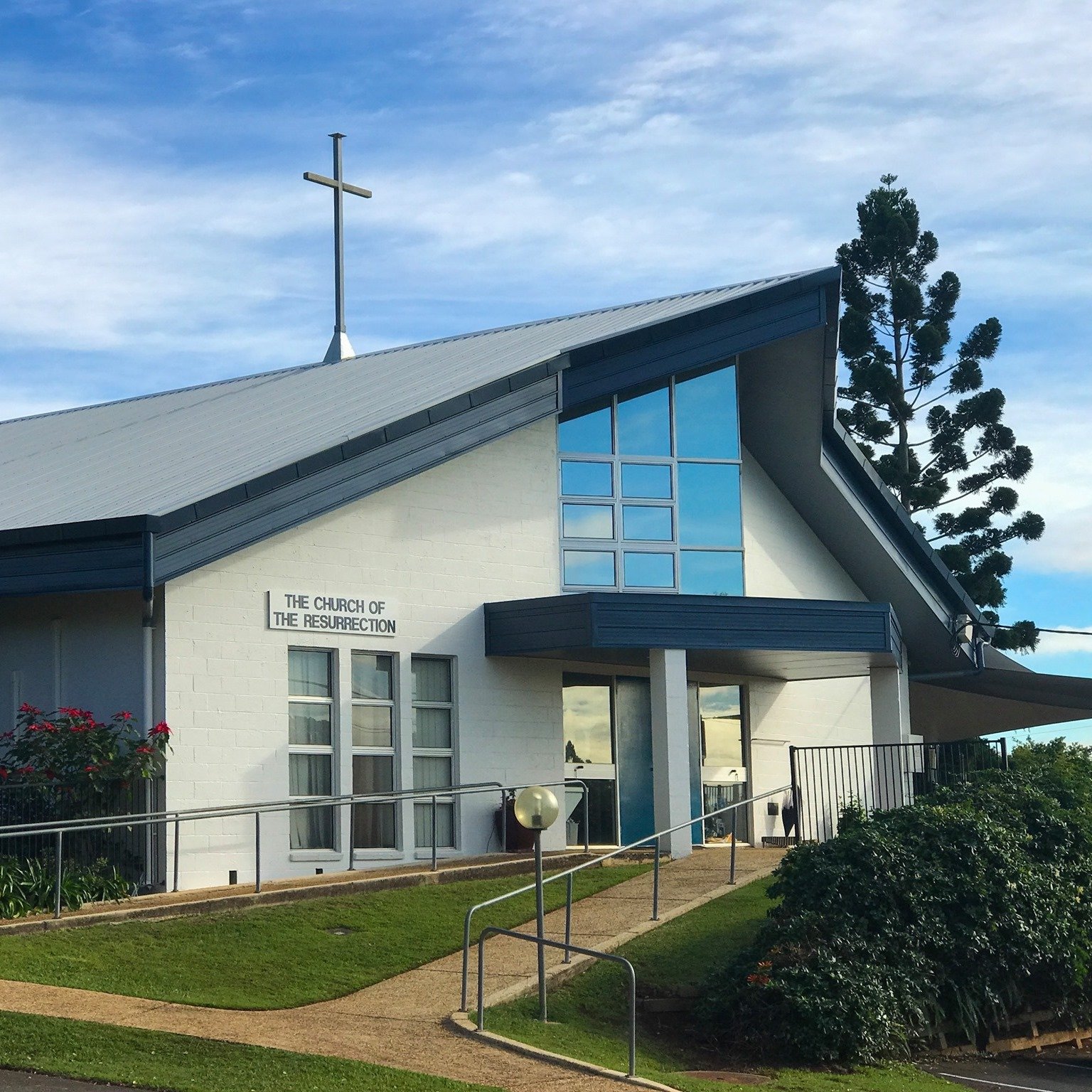
Our History
The birth of the Anglican Parish of Aspley: Fr Allton became the first Rector of the Parish of Aspley in 1968, and he continued in that position until his retirement at the end of April 1997.
Who we were
During the first half of the last century the Anglicans in the area found themselves at various times part of the parishes of Lutwyche, Nundah and Zillmere. Finally, Chermside, including Aspley and Bald Hills, was constituted as a separate Parochial District in 1951, and a Parish in 1954. A recent history of Chermside parish notes that around this time:
In Aspley, a Sunday School with over 30 children was formed with Mrs Nutt as Superintend-dent and Miss D. Clark as an assistant. By December 14, 1952 services were arranged in the Aspley Assembly Hall, which was purchased in January 1953 for [£750] and became St Paul’s.
“St Paul’s Hall Aspley”, as it was shown in the Anglican Church records, was blessed and dedicated on 11 April 1953. The building had been erected as a public hall in 1918, and was at 1354 Gympie Road, now the extension of Robinson Road towards Albany Creek Road.
Early in 1966, the parishioners from Aspley and Bald Hills, with the encouragement of the then Rector of Chermside, the late Rev’d Jack Kruger, petitioned for these suburbs to be a separate parochial district, which was established on 21 February in that year, with the Rev’d Derek Allton as Vicar.
Fr Allton became the first Rector of the Parish of Aspley in 1968, and he continued in that position until his retirement at the end of April 1997.
Shortly after the Parish was established, it was discovered that the Church and Rectory site on Gympie Road was subject to resumption for the purpose of providing a more viable traffic link between Gympie Road and Albany Creek Road. Negotiations regarding the resumption continued for over a decade and were a preoccupation with the Parish administration for much of this time. Eventually the Church and Rectory were relocated to the present 0.7 ha site at 30 Ridley Road, Bridgeman Downs, where The Church of the Resurrection was consecrated on 25 October 1981. The proceeds of the resumption of the Gympie Road property allowed the new buildings to be opened debt-free.
Bald Hills was excised from the Parish in 1986 and is now part of the Parish of “Sandgate Northpoint”.
Albany Creek
During the second half of the last century, the Anglican presence in Albany Creek took a variety of forms. There were some who thought in the 1960s that Albany Creek would form part of the new Parish of Aspley, but this did not happen.
From the 1970s, Albany Creek formed part of the Mission District of Pine Rivers South, which was based at Strathpine, and at this time services in Albany Creek were held in privately owned premises. In 1990, Albany Creek became part of the Everton Park Parish.
In 1993, the Provisional Parish of St Anne’s, Albany Creek was established with the Rev’d Gary Smith as the Priest-in-Charge. The congregation worshipped in a local school, and the vicarage was a house at the southern end of Keong Road, opposite the Albany Hills State School.
Amalgamation of Aspley and Albany Creek
When Fr Allton retired from the Parish of Aspley in 1997, the late Rev’d Canon Frank Knight was locum tenens for about three months. During this time the decision was made to merge the two areas into the Parish of Aspley-Albany Creek, under the Rev’d Greg March as Rector. In 2006, the Rev John Roundhill was appointed Rector. After Revd Roundhill left to take on the role as Dean of the Cathedral in Bendigo, Rev’d Ken Suddick joined the parish as Rector in August 2012. In 2015 Rev’d Nicholas Whereat left the Parish of Waterloo Bay after accepting the Archbishop’s invitation to be Rector of the Parish of Aspley-Albany Creek.
In 2011, the Parish celebrated the 30th anniversary of the consecration of The Church of the Resurrection, and the 45th anniversary of its creation (in the form of the Parochial District of Aspley). (In 2007, the Parish celebrated the 10th anniversary of its amalgamation. The writing of a historical account of ministry in the area was undertaken to mark this occasion.)

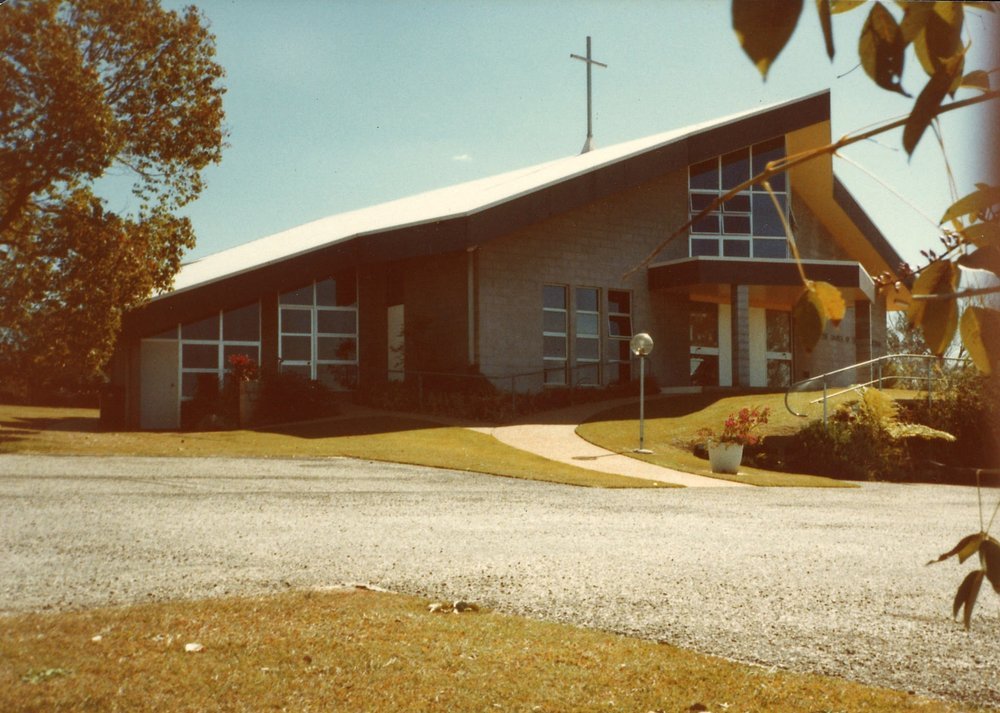
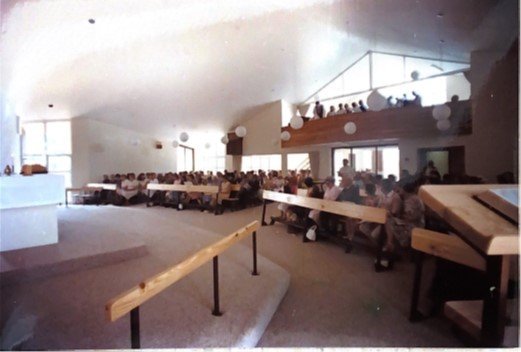
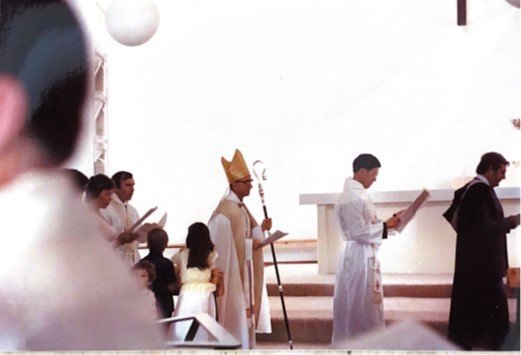
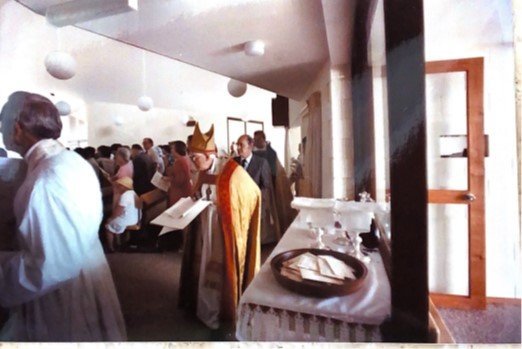
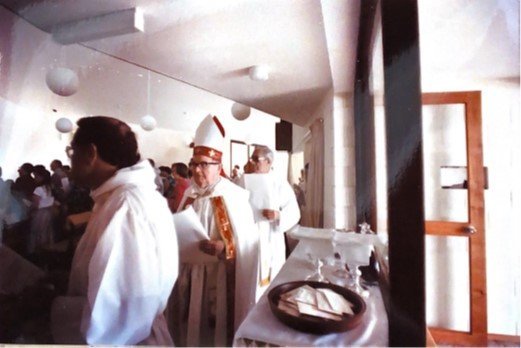
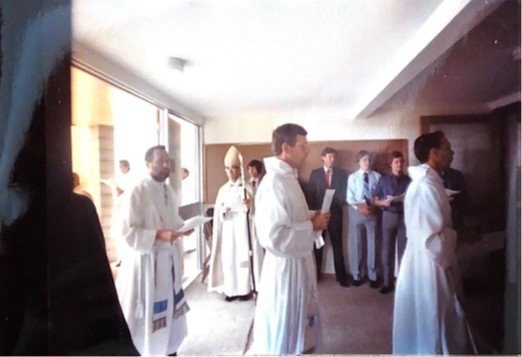






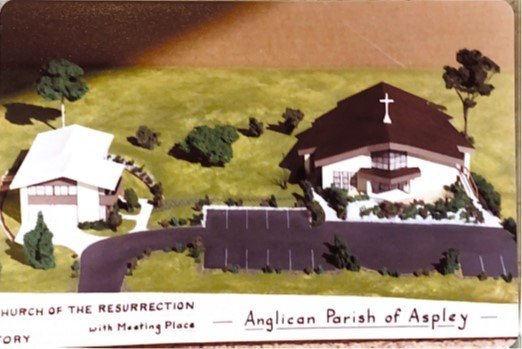
The Anglican Compass Rose
The Compass Rose Shield of the Anglican Communion was designed in 1954 by Canon Edward N. West of the Cathedral of Saint John the Divine in New York for the Second International Anglican Congress in Minneapolis, Minnesota. The Compass Rose was modernised in 1988 and the new design was laid into the floor of Canterbury Cathedral during the Twelfth Lambeth Conference of Anglican bishops.
At the centre of the circular emblem is the Cross of St George, a reminder of the origins of the Anglican Communion, and a link unifying the past to the Communion today. Encircling the cross is a band bearing the inscription, “The Truth shall make you free.” (John 8:32) It is written in the original New Testament Greek, the traditional language of scholarship within the Anglican Communion. From the band radiate the points of the compass. The compass symbolizes the worldwide spread of the Anglican Faith. Surmounting the shield, at the North, is a mitre, the symbol of apostolic order essential to all Churches and Provinces constituting the Anglican Communion.
The Resurrection Tapestry by Robyn Mountcastle
The resurrection tapestry was designed and made by Robyn Mountcastle (Mrs Robyn James) a parishioner. The Tapestry shows the Phoenix rising from the ashes. It also includes the Cross of the resurrection.
The Font
Fr Derick Alton designed and built the font with the help of Bob Johnson. The triangle reminds us of the Holy Trinity, the bowl is in the shape of a ploughshare reminding us of the call to beat our weapons in to tools for growing crops (Isaiah 2:4)
“He shall judge between the nations,
and shall arbitrate for many peoples;
they shall beat their swords into ploughshares,
and their spears into pruning-hooks;
nation shall not lift up sword against nation,
neither shall they learn war any more.”
The words written in Greek on the top of the font come from 1 Peter 3:21 form a palindrome
NIYON ANOMHMA MH MONAN OYIN (Νίψον ἀνομήματα, μὴ μόναν ὄψιν) meaning “Wash the sins, not only the face,” or “Cleanse my sin and not my face only”. It is inscribed upon a holy water font outside the church of Hagia Sophia in Constantinople.




